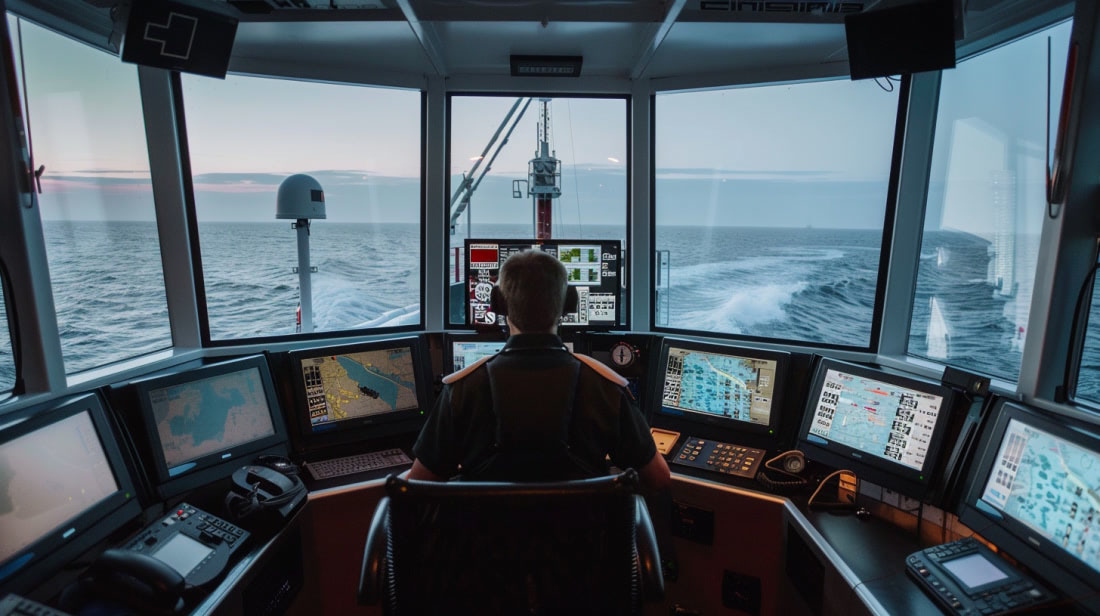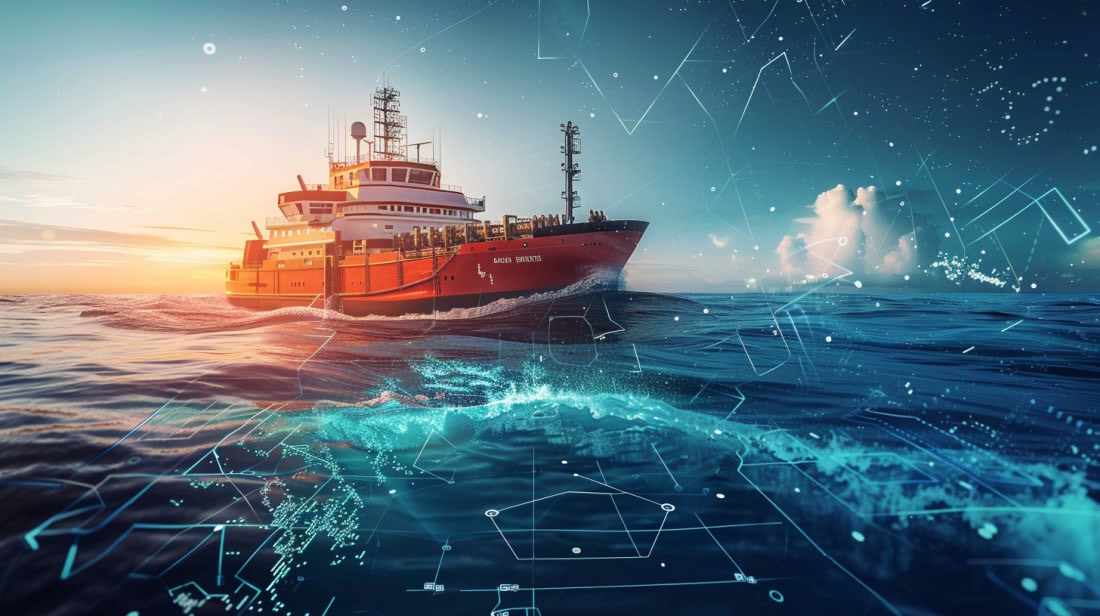Marine monitoring refers to the systematic collection and analysis of data related to the marine environment. It uses different techniques and technologies to collect information about the ocean’s physical, chemical, and biological characteristics. The data helps evaluate marine ecosystems, detect threats, and support conservation and management.
Marine monitoring is crucial for understanding and protecting the ocean. The ocean covers over 70% of the Earth’s surface and is important for regulating the planet’s climate, providing food and resources, and supporting many marine species. However, human activities such as pollution, overfishing, and climate change are putting immense pressure on marine ecosystems. Without monitoring, it would be hard to evaluate the effects of these activities and respond appropriately to reduce them.
Key Takeaways
- Marine monitoring is the process of collecting data on the ocean and its inhabitants to better understand and protect marine life.
- Marine monitoring is crucial for ocean conservation efforts, as it helps to identify threats and track changes in the marine environment.
- Key features of marine monitoring services include remote sensing, acoustic monitoring, and satellite tracking.
- Marine monitoring helps to protect marine life by identifying and mitigating threats such as overfishing, pollution, and climate change.
- Types of marine monitoring systems include acoustic monitoring, satellite tracking, and underwater cameras.
The Importance of Marine Monitoring for Ocean Conservation
Human activities have had a significant impact on the health of the ocean. Pollution from industrial and agricultural sources has led to the accumulation of toxins in marine ecosystems, threatening the health of marine life and human populations that rely on seafood as a food source. Overfishing has depleted fish stocks and disrupted marine food webs, leading to imbalances in ecosystems. Climate change is causing rising sea levels, ocean acidification, and changes in water temperature, all of which have profound effects on marine life.
Marine monitoring plays a crucial role in identifying and addressing these issues. By collecting data on water quality, biodiversity, fish populations, and other key indicators, scientists can assess the health of marine ecosystems and identify areas that require conservation efforts. This information can then be used to develop strategies for protecting vulnerable species, restoring damaged habitats, and managing fisheries sustainably.
Key Features of Marine Monitoring Services
There are several types of marine monitoring services available, each with its own set of features and benefits. These include:
1. Water Quality Monitoring: This involves the collection and analysis of data on various parameters such as temperature, salinity, dissolved oxygen, and nutrient levels in the water. It helps to assess the overall health of marine ecosystems and identify sources of pollution.
2. Biodiversity Monitoring: This focuses on monitoring the diversity and abundance of species in a given area. It helps to identify areas of high biodiversity and prioritize conservation efforts.
3. Fish Population Monitoring: This involves monitoring fish populations to assess their abundance, size distribution, and reproductive success. It helps to inform fisheries management decisions and ensure sustainable fishing practices.
4. Habitat Monitoring: This involves monitoring the physical characteristics of marine habitats such as coral reefs, seagrass beds, and mangroves. It helps to assess the health of these habitats and identify threats such as pollution or habitat loss.
How Marine Monitoring Helps to Protect Marine Life
Marine monitoring plays a crucial role in protecting and conserving marine life. By collecting data on key indicators such as water quality, biodiversity, and fish populations, scientists can assess the health of marine ecosystems and identify areas that require conservation efforts.
For example, marine monitoring has been used to address issues such as coral bleaching. Coral reefs are highly sensitive to changes in water temperature, and rising sea temperatures due to climate change have led to widespread coral bleaching events. By monitoring water temperature and other factors that contribute to coral bleaching, scientists can identify areas at risk and take measures to protect these fragile ecosystems.
Marine monitoring has also been used to address overfishing. By monitoring fish populations and assessing their abundance and reproductive success, scientists can determine sustainable fishing limits and implement measures such as fishing quotas or protected areas to ensure the long-term viability of fish stocks.
Types of Marine Monitoring Systems
There are several types of marine monitoring systems available, each with its own set of features and benefits. These include:
1. Satellite Monitoring: This involves the use of satellites to collect data on various parameters such as sea surface temperature, chlorophyll concentration, and ocean currents. It provides a broad-scale view of the ocean and helps to track large-scale changes such as El Niño events or the movement of ocean currents.
2. Buoy Monitoring: This involves the use of buoys equipped with sensors to collect data on parameters such as water temperature, salinity, and wave height. Buoys can be deployed in specific areas of interest and provide real-time data for monitoring purposes.
3. Underwater Monitoring: This involves the use of underwater sensors and instruments to collect data on parameters such as water quality, biodiversity, and fish populations. These sensors can be deployed on the seafloor or attached to underwater structures such as reefs or shipwrecks.
4. Boat Monitoring: This involves the use of boats equipped with sensors and instruments to collect data on various parameters. Boat monitoring systems can cover larger areas than underwater sensors and provide more detailed information on water quality, biodiversity, and fish populations.
Benefits of Boat Monitoring Systems

Boat monitoring systems offer several benefits for marine monitoring efforts. Firstly, they allow for the collection of data over larger areas compared to underwater sensors or buoys. This is particularly important for monitoring large-scale phenomena such as ocean currents or the spread of pollutants.
Secondly, boat monitoring systems provide more detailed information on water quality, biodiversity, and fish populations compared to satellite or buoy monitoring. By collecting data at different depths and locations, boat monitoring systems can provide a more comprehensive picture of the marine environment.
Lastly, boat monitoring systems allow for real-time data collection and analysis. This is crucial for addressing issues such as oil spills or harmful algal blooms, where timely information is needed to inform response efforts.
How Marine Monitoring Helps to Manage Fisheries
Marine monitoring plays a crucial role in managing and sustaining fisheries. By collecting data on fish populations, scientists can assess the abundance, size distribution, and reproductive success of fish stocks. This information is then used to determine sustainable fishing limits and implement measures such as fishing quotas or protected areas.
For example, marine monitoring has been used to address overfishing in the Gulf of Mexico. By monitoring fish populations and assessing their abundance and reproductive success, scientists were able to determine that red snapper stocks were being overfished. As a result, fishing quotas were implemented to reduce the catch of red snapper and allow the population to recover.
Marine monitoring also helps to identify and address other issues affecting fisheries, such as habitat degradation or the presence of invasive species. By monitoring the physical characteristics of marine habitats and collecting data on biodiversity, scientists can assess the health of these habitats and identify threats that may impact fish populations.
The Role of Marine Monitoring in Climate Change Research
Marine monitoring plays a crucial role in climate change research. The ocean plays a key role in regulating the Earth’s climate by absorbing heat and carbon dioxide from the atmosphere. However, climate change is causing rising sea levels, ocean acidification, and changes in water temperature, all of which have profound effects on marine life.
By monitoring parameters such as sea surface temperature, ocean acidification levels, and carbon dioxide concentrations, scientists can track changes in the ocean and their impact on climate. This information is crucial for understanding the mechanisms driving climate change and developing strategies to mitigate its effects.
For example, marine monitoring has been used to track the spread of harmful algal blooms. These blooms are becoming more frequent and intense due to climate change, posing a threat to marine ecosystems and human health. By monitoring water quality parameters such as nutrient levels and chlorophyll concentration, scientists can identify areas at risk of harmful algal blooms and take measures to prevent their occurrence.
Challenges and Limitations of Marine Monitoring
Despite its importance, marine monitoring faces several challenges and limitations. Firstly, the vastness of the ocean makes it difficult to collect data over large areas. This is particularly true for remote or inaccessible regions such as the deep sea or polar regions.
Secondly, collecting data in the marine environment can be logistically challenging and expensive. Deploying sensors or instruments in the ocean requires specialized equipment and vessels, which can be costly to operate.
Thirdly, analyzing and interpreting the data collected from marine monitoring efforts can be complex. The ocean is a dynamic and complex system, and understanding the relationships between different parameters and their impact on marine life requires expertise and advanced analytical tools.
Lastly, there is a lack of standardized protocols and methodologies for marine monitoring. This makes it difficult to compare data collected by different organizations or across different regions, limiting our ability to assess global trends or develop effective conservation strategies.
Despite these challenges, there are ways to address and overcome them. Collaboration between scientists, governments, and organizations is crucial for sharing data, resources, and expertise. Technological advancements such as remote sensing or autonomous underwater vehicles can also help to overcome logistical challenges and improve data collection efforts. Standardizing protocols and methodologies for marine monitoring can ensure consistency and comparability of data.
Future of Marine Monitoring: Technological Advancements and Innovations
The future of marine monitoring holds great potential for technological advancements and innovations. As technology continues to evolve, new tools and techniques are being developed to improve data collection, analysis, and interpretation.
For example, advancements in satellite technology are allowing for more frequent and higher-resolution imaging of the ocean surface. This provides a more detailed view of parameters such as sea surface temperature or chlorophyll concentration, helping scientists to track changes in the ocean more accurately.
Advancements in underwater sensor technology are also improving our ability to collect data on water quality, biodiversity, and fish populations. Miniaturized sensors and instruments can be deployed on underwater robots or drones, allowing for more precise and targeted data collection.
Furthermore, advancements in data analysis and interpretation are improving our understanding of the complex relationships between different parameters and their impact on marine life. Machine learning algorithms and artificial intelligence are being used to analyze large datasets and identify patterns or trends that may not be apparent to human observers.
Marine monitoring is crucial for understanding and protecting the ocean. It helps to assess the health of marine ecosystems, identify potential threats or issues, and inform conservation and management efforts. By collecting data on water quality, biodiversity, fish populations, and other key indicators, scientists can assess the impact of human activities on the ocean and take appropriate measures to mitigate them.
However, marine monitoring faces several challenges and limitations, such as the vastness of the ocean, logistical challenges, and the complexity of data analysis. Collaboration between scientists, governments, and organizations is crucial for addressing these challenges and improving data collection efforts.
The future of marine monitoring holds great potential for technological advancements and innovations. Advancements in satellite technology, underwater sensors, and data analysis techniques are improving our ability to collect, analyze, and interpret data on the marine environment. These advancements will help us better understand the impact of human activities on the ocean and develop effective strategies for its conservation.
If you’re interested in marine-related topics, you might also enjoy reading about custom interior design for luxury cars. NTD Marine Group offers a fascinating article on how they create bespoke interiors that exude luxury and style. From handcrafted leather seats to personalized finishes, their attention to detail is truly impressive. Check out their article here to discover the artistry behind creating the perfect interior for your dream car.
FAQs
What is marine monitoring?
Marine monitoring is the process of collecting and analyzing data on the health and condition of marine ecosystems, including water quality, biodiversity, and the presence of pollutants.
Why is marine monitoring important?
Marine monitoring is important because it provides information on the health of marine ecosystems, which can be used to inform management decisions and policies aimed at protecting and conserving these ecosystems.
What are some examples of marine monitoring techniques?
Examples of marine monitoring techniques include water quality sampling, biodiversity surveys, acoustic monitoring, and satellite remote sensing.
Who conducts marine monitoring?
Marine monitoring is conducted by a variety of organizations, including government agencies, non-governmental organizations, academic institutions, and private companies.
What are some of the challenges associated with marine monitoring?
Challenges associated with marine monitoring include the high cost of equipment and personnel, the difficulty of accessing remote or deep-sea areas, and the variability of marine ecosystems over time and space.
How can the results of marine monitoring be used?
The results of marine monitoring can be used to inform management decisions and policies aimed at protecting and conserving marine ecosystems, as well as to track changes in these ecosystems over time.





